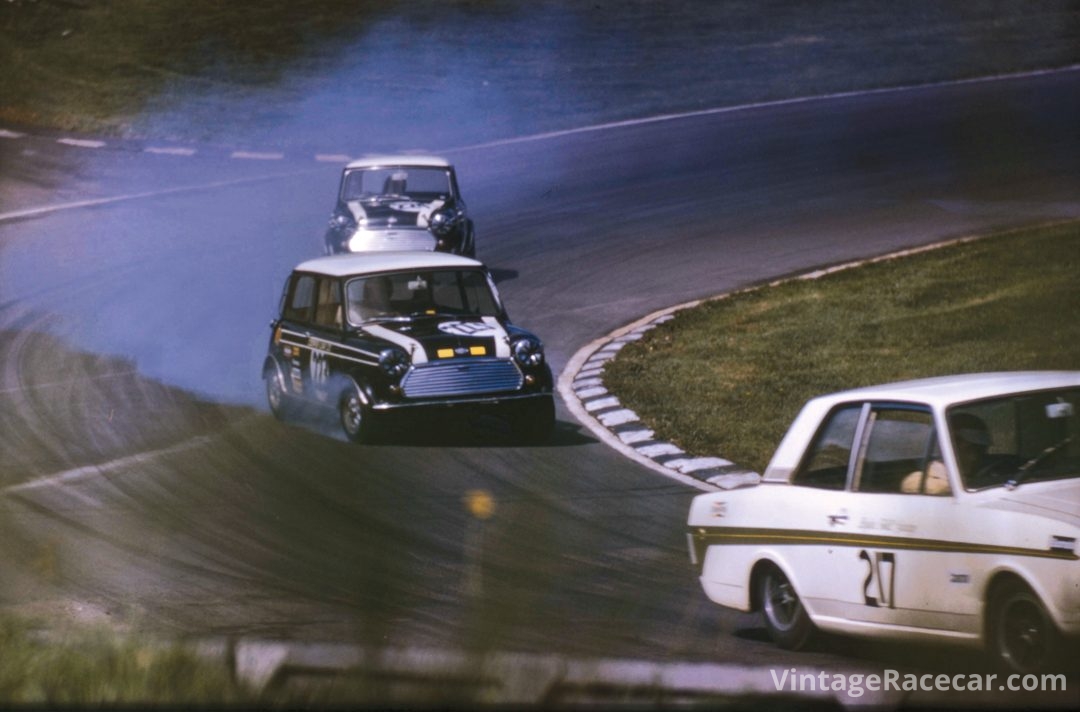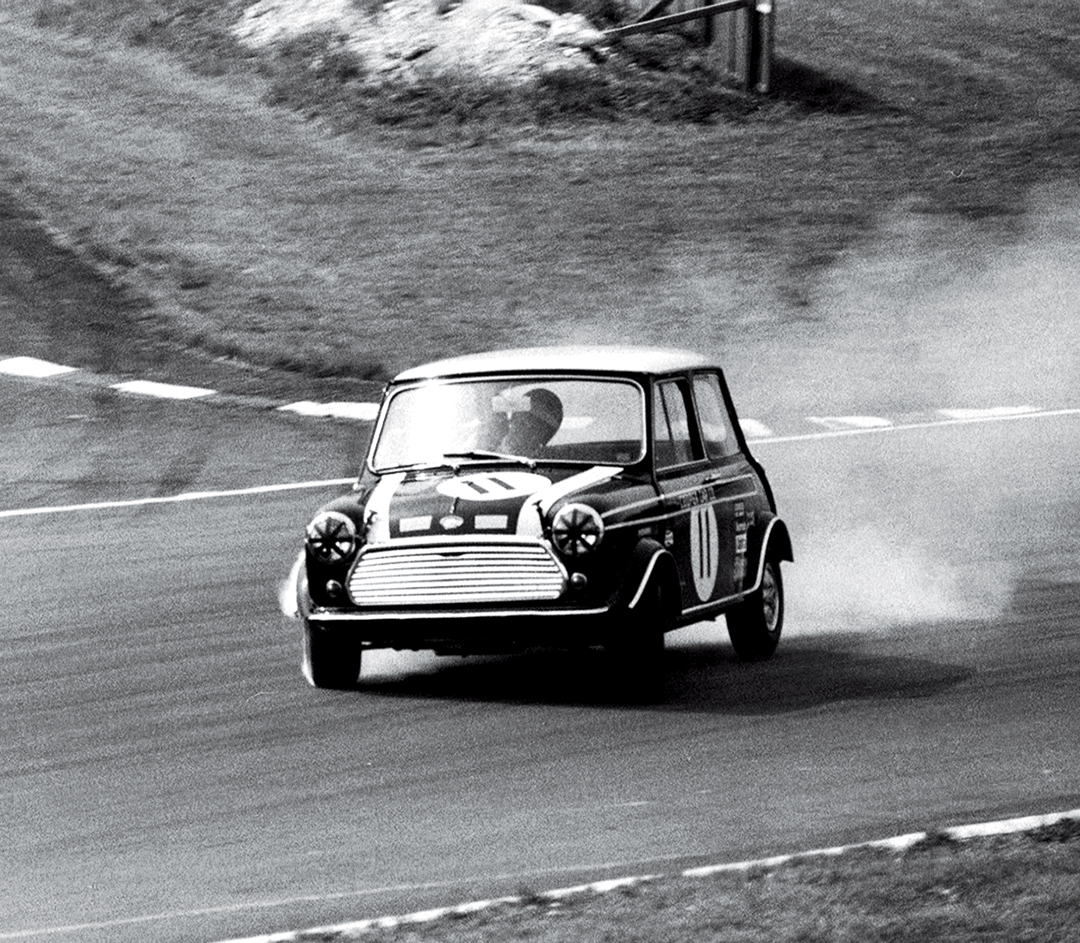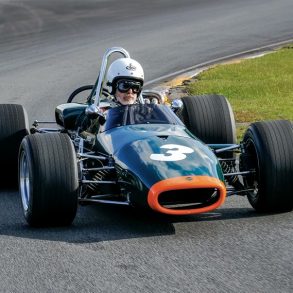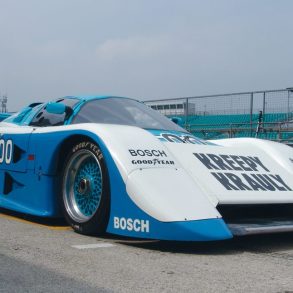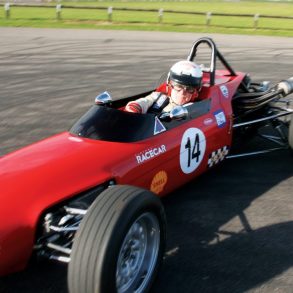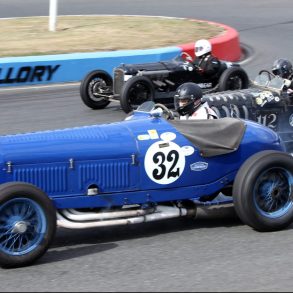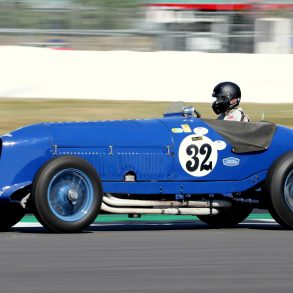My first visit to Donington Park motor racing circuit was as an 11 year old lad, with my father. It was a rather prestigious meeting, organized by Derby & District Motor Club, the 1938 Donington Grand Prix. It was the fourth time Donington had held such an event, and obviously, the last time a race of this magnitude was held in the UK until after World War II. There had been some difficulty with its organization as it had been called off. However, Mr. Chamberlain, our Prime Minister returned to London from Germany famously announcing the infamous words “peace in our time,” and all was back on. Mercedes, Auto Union, Delahaye, and Maserati came from overseas. ERA, MG, Riley, and Alta made up the British contingent. Tazio Nuvolari won the race in his Auto Union. The crowds were completely spellbound by his race craft, thus leaving me superbly impressed. My burning ambition was to be a racer, just like Nuvolari. I distinctly remember returning home and putting pieces of cardboard onto the forks of my bicycle. When I rode it, it made, to me, the sound of Nuvolari’s car. I was Nuvolari for the next couple of weeks.
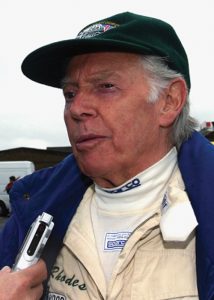
My father was interested in motorsport and that led me to becoming a mechanic. Apart from my dream of being Nuvolari, realistically that is what I always wanted to do. The first step of my dream to becoming a racing driver was when, in 1958, I raced a Turner owned by John Handley in various speed events and hill climbs. My racing career really started in Formula Juniors with the Midland Racing Partnership. For one year I drove with Alan Evans. Alan was a super guy who was studying to be an accountant. He got a bit stressed out, as you would say nowadays. We were in our local pub one day when Alan’s doctor walked in. He told him he should do something other than studying. I knew John Cooper was building a kit for a Formula Junior. I suggested to Alan that he buy the kit, I would build it, and we would share the drive. The first time out at Oulton Park was the end for Alan. He said, “I’m not going through that again…through Gerard’s at that speed with 30 others around me.” So I had the drive for the rest of the year. It gave me tremendous opportunities.
Ken Tyrrell spotted me. I had a test with him but he already had Tony Maggs and John Love in the team so there wasn’t a drive there for me. Bob Gerard came along and I got involved with him. He had a couple of Formula One Coopers. I drove them regularly all over the place in Formula Libre events. I remember being awarded “Driver of the Day” at Mallory Park, which I was particularly pleased with. I also won the Goodwood Trophy with the car, just as Goodwood finished…something very few people ever got. I remember Stirling Moss being asked which of the trophies he had won was he most proud of. He told the interviewer that it was the Goodwood Trophy—the Goodwood Ton. It is just a small trophy shaped as a ton weight and awarded to those drivers who had achieved a 100-mile-an-hour lap.
I fleetingly emulated Nuvolari as a Grand Prix driver. Bob entered me for the 1965 British Grand Prix in his 1.5-liter Cooper T60 Climax V-8, my one and only Grande Epreuve. I didn’t feel too far out of my depth as previous experience in the car helped. I was rather overwhelmed by other works cars on the grid and started in last place. I think the car was overwhelmed, however; you have to remember it was built for the 1962 season. For 38 laps, I circulated until breaking down with ignition problems. It was a lovely experience for me. Jim Clark driving a Lotus Climax won the race and Graham Hill in a BRM was 2nd. Good company to be in.
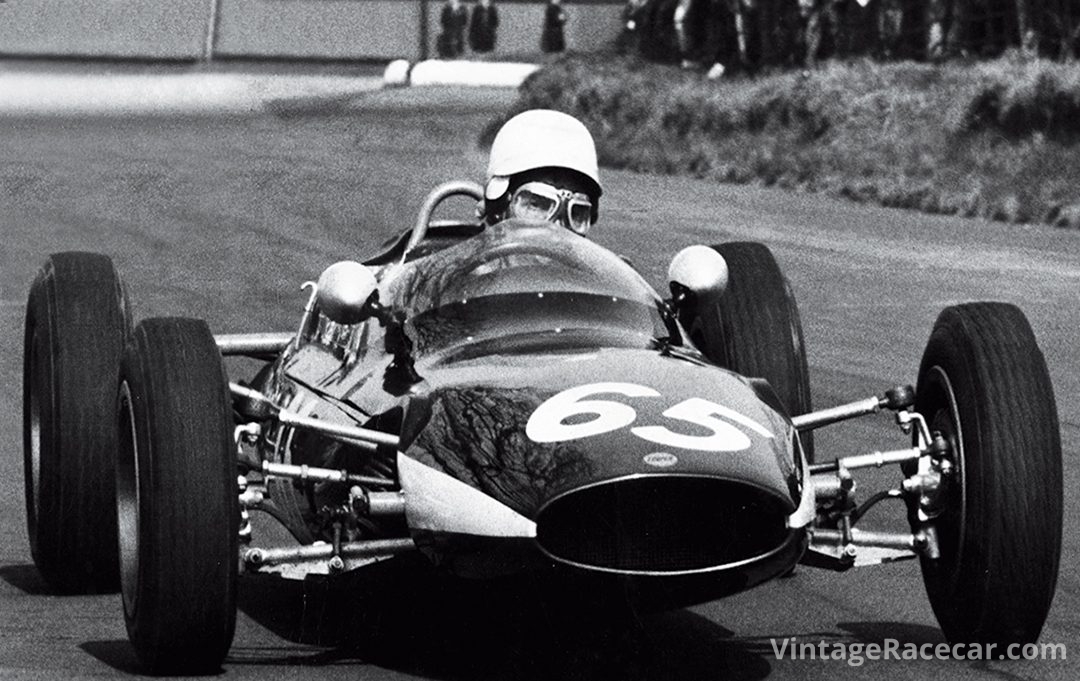
While I was testing Bob’s Formula One car at Silverstone, in 1964, I met Coopers’ works manager. He was with John Love and Tony Maggs testing the Mini Cooper S. Of course, I had previously worked at Coopers, in Surbiton, building up four Formula Junior cars and knew him from my time there. I managed to talk him around to give me a try in one of the new cars that Love and Maggs were driving. It is obvious to say that comparison speeds between a Formula One car and a Mini Cooper is vast. But one thing I found was, as I got into the first corner, there were little or no brakes. I threw the car sideways, floored it, and thought this must be the way to drive it. It was. I continued to go into corners far too fast, lift, the back end would step out and steer the car, oversteer and again floor it. The car would go around a corner in a complete drift. So that’s the way I drove the Cooper S all the time. Dunlop hated me for it! They asked why I didn’t drive the car properly. I went through a few tires I can tell you. It gave me my nickname “Smokey” Rhodes. A technician took the temperature of one of the tires I had been racing on and found it to be over 250oF (120oC). I had tremendous success with the works team and suppose became synonymous with the Mini Cooper S marque. Racing in the 1960s and ’70s, although very serious, was great fun. A typical race weekend with the works Mini Cooper team would see us spending time at the Castrol team transporter. This would be converted into a motel. We had the choice of good wines and brandy, so there was never a rush to go home when one finished racing.
In 1965, I won the 1,300-cc class of the British Saloon Car Championship, similar to today’s British Touring Car Championship, for the first time. I went on to win it again in 1966, 1967, and 1968. My driving style allowed me to keep up with cars that had far more muscle and grunt in the engine department than I had. They could pull away on long straights but I could catch them in the twisty bits and the corners, much to their displeasure. 1968 also gave me the European Touring Car Championship. I continued to race the Mini Cooper in 1969, and my last season 1970, without works backing. I finally hung up my helmet in 1973. If I were asked to compare racing today with that of my day the major difference would be the ladder of success. To get into motor racing, one would not simply write a check to get a drive, it was all about competence. All the way through my racing career, I knew there would be someone better than I was and that kept me fast. Skill and capability was the yardstick by which we were all measured. I would often think of youngsters coming into racing, being faster than I was, and blowing me into the weeds. It was important to keep sharp.
